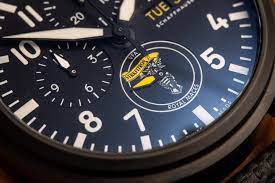Affordable IWC Replica Watches For Sale - Buy Cheap Fake Watches

Scientists who are trying to create large marine protected zones face a major challenge in finding the best locations to build these sanctuaries. This is because the tracking of these species that migrate a lot can be difficult. Barbara Block's technology integrates the latest advances in ocean observing systems, sensor technology and computational methods to provide data about the sustainability of marine predators, both protected and exploited.
Erika Cuellar (Bolivia)For more than 10 years, the largest national park in Bolivia, Kaa-Iya del Gran Chaco has been the home of Erika Cuellar. She has facilitated participatory conservation through training native Guaranis to preserve their habitat themselves. The world's largest tropical dry forest is home to 70 species of large mammal, including jaguars and pumas.(IWC Replica Watches)
Cuellar will now move on to the Gran Chaco, which includes Bolivia, Brazil Paraguay, and Argentina. Since more than a hundred years, its natural resources, which include 400 plant species, 150 mammal and bird species, have been under threat. This includes the wild ancestors to domesticated llamas, guanacos.
Cuellar, a native of Guarani, Ayoreode, and Chiquitano, trained three ethnic groups as parabiologists five years ago. These parabiologists are native residents and play an important role in promoting conservation among native communities. Cuellar wants to expand her work in Paraguay and Argentina, creating a long-term sustainable local employment option.
Mark Kendall, 40 years old, AustraliaAt Australia's prestigious University of Queensland Bio-Engineering Research Institute, Professor Mark Kendall has developed a technique that is inexpensive and extremely efficient. It will improve the fight against infectious diseases, which cause millions of deaths each year.Richard Mille Replica
Vaccines can prevent many fatalities. The traditional syringe and needle method, which was invented in 1853 has some downsides. It is also expensive and not always feasible. Professor Kendall's "Nanopatch" method will increase efficiency, while reducing all costs and risks, including transportation. Nanopatch is not required to be refrigerated, as it contains a dry vaccine.
|

